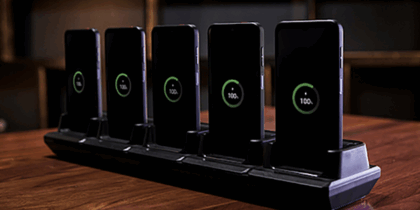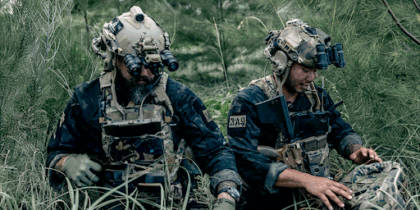For several years, TriTech Software Systems’ annual conference, known as TriCon, has brought together over 4,000 public safety agencies along with TriTech’s strategic partners. Samsung became one such strategic partner last year, and we were pleased to return this year to discuss public safety technologies and emerging trends.
Samsung sponsored an hour-long panel discussion entitled “Arming the Mobile First Responder,” in which I participated as the moderator. The panel drew in thought leaders from across the public safety spectrum, including veteran tech practitioners from fire services, corrections and law enforcement. As a group, we discussed the emerging benefits of mobile technology made possible by the new generation of smartphones, mobile apps and wearables. The discussion ranged across a wide variety of topics and generated some thought-provoking responses.
How Can Mobile Technology Improve First Response?
An experienced career law enforcement officer, Dale Stockton shared his insights on the ways police agencies have embraced emerging technologies over the past couple of years. Stockton noted that in-car computers are now ubiquitous, but they have created a kind of dependence on the flow of information from the laptop. Unfortunately, this anchors the officer to the vehicle at the very time that agency leaders are encouraging officers to get out and interact with citizens.
“Smartphones allow us to take the computing capability out of the car, into the field and engage the community,” Stockton said. “And they come with a utility that the in-car computer can never match — such as contacting a runaway’s parents from the field and helping identify an unknown subject with facial recognition. Plus, it provides that same information access and utility for assignments like bike officers and foot patrols.”
Corrections Department Advancing Digital Transformation
Another of the panelists was Jeff Funk from the California Department of Corrections. From his perspective in the corrections system, Funk provided insight to the challenges of a paper-based parole system and the force-multiplying benefits created by technology. “We had large case books that weighed ten or fifteen pounds and some agents carried two or three of those books because of their caseloads,” Funk explained. The handwritten notes were often difficult to read, especially when agents rotated. If the physical book was lost or destroyed, it created significant administrative and record-keeping problems.
“Smartphones allow our agents to ‘talk to text’ at a level of 150 to 170 words a minute,” Funk said, noting that most agents can’t type more than 30 words a minute. The result was better quality notes that were more legible, searchable and easier to maintain and transfer.
The smartphone also provides ready access to the specific conditions of parole, allowing agents to make timely referrals. “These things are very difficult in a paper-based system, but the technology works for us,” Funk told us. “We’ve found that the quicker we refer a parolee to a program, the more likely they are to participate and stay in the program. That means they’re less likely to recidivate and they’re more likely to be a better citizen and neighbor. That’s really important to the citizens.”
Mobile CAD Delivers Situational Awareness for Fire Personnel
We were also joined by Mike Scott from the San Diego Fire-Rescue Department. When it came to the realm of fire response, Scott noted that computers in fire vehicles have largely taken the role of communicating with computer-aided dispatch (CAD) systems, with more limited functionality than in other areas. Smartphones, though, can dramatically improve situational awareness by providing real-time geo-location capability at the individual level, rather than the vehicular. “[Fire personnel] may be a quarter-mile away from the vehicle,” Scott explained. “And the devices can provide access to information like hazmat specifics. This information may exist in CAD, but it’s not readily available to the field. Now a whole new source of information is at the fingertips of first responders.”
What’s the Top Emerging Technology in Public Safety?
One of our most interesting conversations revolved around wearables. Each of the panel members discussed how the technology could benefit their field of experience. Stockton outlined a scenario where an officer jumps from a car to chase a suspect and the wearable device, using built-in accelerometer and gyro sensors, determines the officer is running and so notifies dispatch while providing real-time location. Thie dispatcher could even remotely activate the wearable’s microphone so they can keep tabs on the pursuit and listen in. All of this happens without the officer having to take any action — allowing them to keep their full attention on the fleeing suspect.
For his part, Funk discussed how wearables could detect blunt force trauma, as well as a stabbing or gunshot situations. “Those data elements — provided real-time — mean that you can get help to the agent more quickly and the likelihood of survival for the first responder increases. We may also be able to tell if there is respiratory distress or a heart attack, which in turn affects the type of response you provide,” he said.
Scott shared that wearables can act as an effective way to accurately locate personnel, and may hold great potential for assessing the dangers to firefighters’ health in hazardous environments. “It will help them to understand where they are at risk,” he said. “We have to figure out how to put the information in the right context, but the opportunity is definitely there to address some of the gaps we currently have.”
Samsung is committed to understanding and supporting the public safety market — it’s critical for solutions providers to engage with those who are active in the field. Public safety operates in a peer network and what one agency finds effective is quickly shared with colleagues and grows organically. We were extremely pleased to participate in the panel and learn from the men and women who serve our communities daily.
Learn more about public safety technology that is improving officer safety and access to information.







